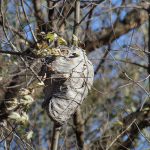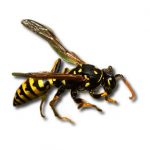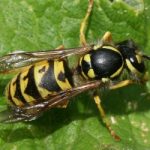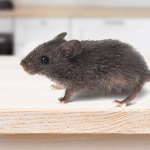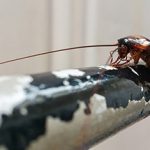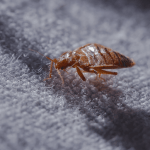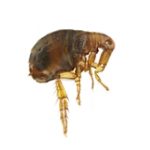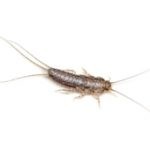Queen Wasps
You’re sitting outside, having a picnic when all of a sudden you hear screams. A flying, buzzing creature has invaded your space and is looking for sweet nectar to fill its tummy with. Although it might seem like a bee, the chances are that it’s a wasp, and even more than that, it’s actually a queen wasp. These hardworking and laborious creatures operate much like bees do, with a colony of drones to bring in the food, fertilise the queen and keep the nest safe. But a queen wasp in the UK does so much more than that. She also looks for safe places to build the nest and then goes through the task of building it. If you’re interested in queen wasps, then this post is certainly for you!
Do wasps have a queen?
A family of buzzing insects, the answer to the question “do wasps have a queen?” is a definite yes. The wasp queen may be considered the head of the wasp household as she delegates functions and ensures the survival of the wasp colony for future generations. This is no small feat as this tiny creature by human standards is cunning, smart and savvy. But first, it’s important to know how to identify a wasp queen.
Queen wasp size
If you want to dig deeper into the queen wasp size question, then we offer the answer. While the queen looks really similar to the workers, queens are typically around 2 – 2.5 cm in length, and workers are about 1.2 – 1.7cm.
How big is a queen wasp?
Now that you know how to identify a queen wasp, let’s look at how big is a queen wasp. As mentioned earlier, telling the difference between a queen wasp and a normal worker wasp can be a bit difficult. But generally, there are some small size differences. For example, the difference between the two is approximately 0.64 cm. Also, the queen wasp’s abdomen is generally pointed and can reach a length of about 2.5 0 3.8 cm. Wasps are omnivorous insects and the queen’s purpose is to lay eggs. Her bright yellow and black stripes, a triangle-shaped head, a distinctive waist and sharp stinger are some of the most common defining characteristics.
Check also: Wasp Nest – How to Locate and Identify Them
Dealing with wasp infestation?
Benefit from the help of qualified specialists and book your wasp extermination!
What does a queen wasp look like?
If you’re wondering “what does a queen wasp look like?”, you’re in for a bit of a challenge. The wasp family consists of drones or worker wasps and the queen. However, the queen wasp identification process can be a bit difficult. For most wasp species, there are normally no distinguishing features, whereas for others, the queen, when compared to the workers, has a slightly longer body. This is the case with wasps from the yellow jackets family. For other species altogether, the queen wasp can be identified by a pointed lower abdomen and a narrower waist.
However, paper wasps are some species where the queen and the workers are exactly the same sizes, so identifying the queen becomes a very difficult task. On the other hand, if you see a solitary wasp in late autumn or early spring, this could be a tell-tale sign of the wasp being the queen, as these are the only insects in the wasp family that hibernate during winter.
Queen wasp size comparison
Ok, so now you know the size of the queen wasp, but what about a brief comparison with some other similar creatures? Here, we take a look at a queen wasp size comparison to make things easier for you.
Queen wasp vs normal wasp
A queen wasp vs a worker wasp in terms of size is a small issue of numbers. Since female wasps tend to be larger than their male counterparts as they carry the eggs, they can be identified with yellow and black markings. Apart from the size and colour markings, there’s hardly any difference in terms of appearances between a queen wasp and a worker wasp. Of course, it should be remembered that each of them plays a different role in the colony.
Queen wasp vs queen bee
Next, you’ll want to know about the queen wasp vs queen bee. There are some crucial differences in the fact that the purpose of the queen bee is to solely lay eggs. While the queen bee also has a stinger, it is mostly used against other rival queens.
Hornet or queen wasp
Wondering if it’s a hornet or a queen wasp? Let’s take a look at some of the differences. Essentially, there are two main hornet species in the UK, and these are quite different in appearance when compared to the queen wasp. The European hornet has a black and yellow abdomen, however, its thorax and legs are either black or reddish-brown. The Asian hornet, on the other hand, is mainly dark (black) with some yellow stripes on the abdomen and yellow tips on the legs. With this in mind, and since we now know that there are no black wasps, you can now be sure to better distinguish between a hornet or a queen wasp based on their appearance.
Can a queen wasp sting?
One of the defining characteristics of female wasps and queen wasps is their sting for self-defence. Therefore, if you’re wondering “can a queen wasp sting?”, the answer is yes! Queens tend to hibernate in winter, settling in areas that are protected from freezing temperatures. However, this should not mean you should let your guard down because queen wasps can also sting you even in winter during dormancy.
Is a queen wasp sting worse?
Is a queen wasp sting worse than a normal wasp sting? The fact is that the queen wasp’s sting is not more dangerous than those of other wasps. They tend to sting in self-defence or when the queen is threatened. The sting of a wasp, and especially a queen wasp, has two small barbs in the tip, each playing an important role. While the first one is meant to stabilise the victim, the second barb goes in easily and with precision. When the victim is rendered immobile by the first barb, the second bard injects venom which can paralyze the stung victim completely.
What happens when you kill the queen wasp?
If it happens that you’ve killed the queen wasp and you’re wondering what happens when you kill the queen wasp, the answer is that the colony continues. If the nest has already been built, and the colony exists, killing the queen wasp won’t really offer a solution to a wasp problem. The workers will simply select one of the queens in training if any.
When do queen wasps come out of hibernation?
Curious about when do queen wasps come out of hibernation? Considering the fact that the queens hibernate during winter, it has been noticed that queen wasps come out of hibernation when the weather warms up during early or late spring. Her main function after that is to begin her new colony. She will lay her first eggs, which are sterile female workers. Then, from early spring until the end of May new workers will take over the foraging and take care of the queen. Before that, the solitary queen will emerge to look for food to feed her worker larvae.
How many queen wasps in a colony?
In most wasp colonies, there’s usually just one queen running the show. She’s the one who starts the colony in the spring after waking up from hibernation, and she’s the only wasp that lays eggs.
That said, in some species, especially ones in warmer or tropical places, there are more than one queen in a colony. This can happen when the colony’s getting started, during a queen “handover,” or in species that naturally have multiple queens.
But for the wasps that are usually seen in the UK, it’s pretty much a one-queen-per-colony kind of setup.
When do queen wasps leave the nest?
Generally, when looking at the question, “when do queen wasps leave the nest?”, you need to know that they do this in early spring when they stop hibernating. This is to help them find food for the newly laid eggs that have been hatched. You will also see solitary queens in late autumn, who try to find a new shelter for the winter in which to hibernate.
Check also: How to Get Rid of a Wasp’s Nest?
How long does a queen wasp live?
When the queen has done her job of producing queen larvae she dies, leaving a crop of virgin queens that will leave the nest, mate, hibernate and reproduce in the following spring. Therefore, regarding the question “how long does a queen wasp live?”, you should know that the lifespan of a queen wasp is around one year.
Takeaways
- Wasp colonies have a queen
- The characteristics and defining features of a queen are hard to tell from the worker drones, although the queen can be a bit longer than them
- A queen wasp can sting, but this sting is not much worse or different than that of the ordinary female wasps
- If you kill a queen wasp, the chances are that you have not yet gotten rid of the entire colony, which will choose a new queen
- Wasp queens come out of hibernation in spring
- Wasp queens live for around one year
Is there a wasp nest on your property?
We share useful information about wasps based on the education, experience and knowledge of the pest technicians. However, we don’t provide any medical advice.



